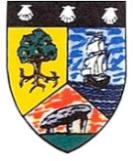ABOUT SLIGO

County Sligo is located on the North West coast of Ireland, on the edge of the Atlantic Ocean. It is bounded by Counties Leitrim (east), Roscommon (south-east), and Mayo (southwest); and lies about 130 miles from Dublin, Ireland’s capital city.
County Sligo occupies an area of some 690 square miles and is home to approximately 62,000 residents, about 60% of which reside in Sligo City, which is the principal urban centre. The county also has a number of significant towns namely: Ballymote, Grange, Collooney, Enniscrone, and Tubbercurry.
Sligo is situated on the Wild Atlantic Way and is known as the “Land of heart’s desire”, being world renowned for the beauty of its landscape and the warmth of its people. The breath-taking mountains, lakes and beaches offer a range of activities for all tastes – including golf, fishing, horse riding, cycling, walking, sailing, swimming and surfing.
Visitors to County Sligo can also enjoy a wealth of archaeological and burial sites of the megalithic age. Carrowmore is one of the oldest Stone Age cemeteries in Europe, while Knocknarea mountain is home to the tomb of the legendary Queen Meabh. Other evidence of early settlements in County Sligo can also be found on Inishmurray Island and at Drumcliffe.
The literary tradition continues to thrive today with a full programme of cultural events running throughout the year.
Traditional Irish music can also be found in many of Sligo’s charming pubs and taverns.
Ben Bulben
Sligo Historical Facts
County Sligo is reputed to have the richest concentration of prehistoric monuments in Western Europe, with over 5,000 archaeological sites, one of which is ‘Carrowmore’, the largest megalithic cemetery in Ireland.
- The town of Sligo was founded in 1243 AD by the Anglo-Norman Maurice Fitzgerald.
- Prior to the Great Famine of the 1840s, the population of County Sligo was 187,000 people, making it one of the most densely-populated areas in Ireland at that time.
- Sligo was a major transit port for emigration during An Gorta Mór (The Great Famine). In 1846 alone, over 11,000 people emigrated through the port.
- In 1871, between 25% to 50% of the people of the county still spoke Irish as a first language and the county was predominately rural in character, with over 70% involved in agriculture.
- Sligo experienced rapid industrialisation during the 19th century, with many public buildings erected during this era, including the town hall and courthouse.
Modern Sligo
Today Sligo is a prosperous town, although it remains steeped in history. Without losing its charm or forfeiting its romantic past, Sligo is positioned to grow and develop both culturally and economically as the gateway to the north-west of Ireland.